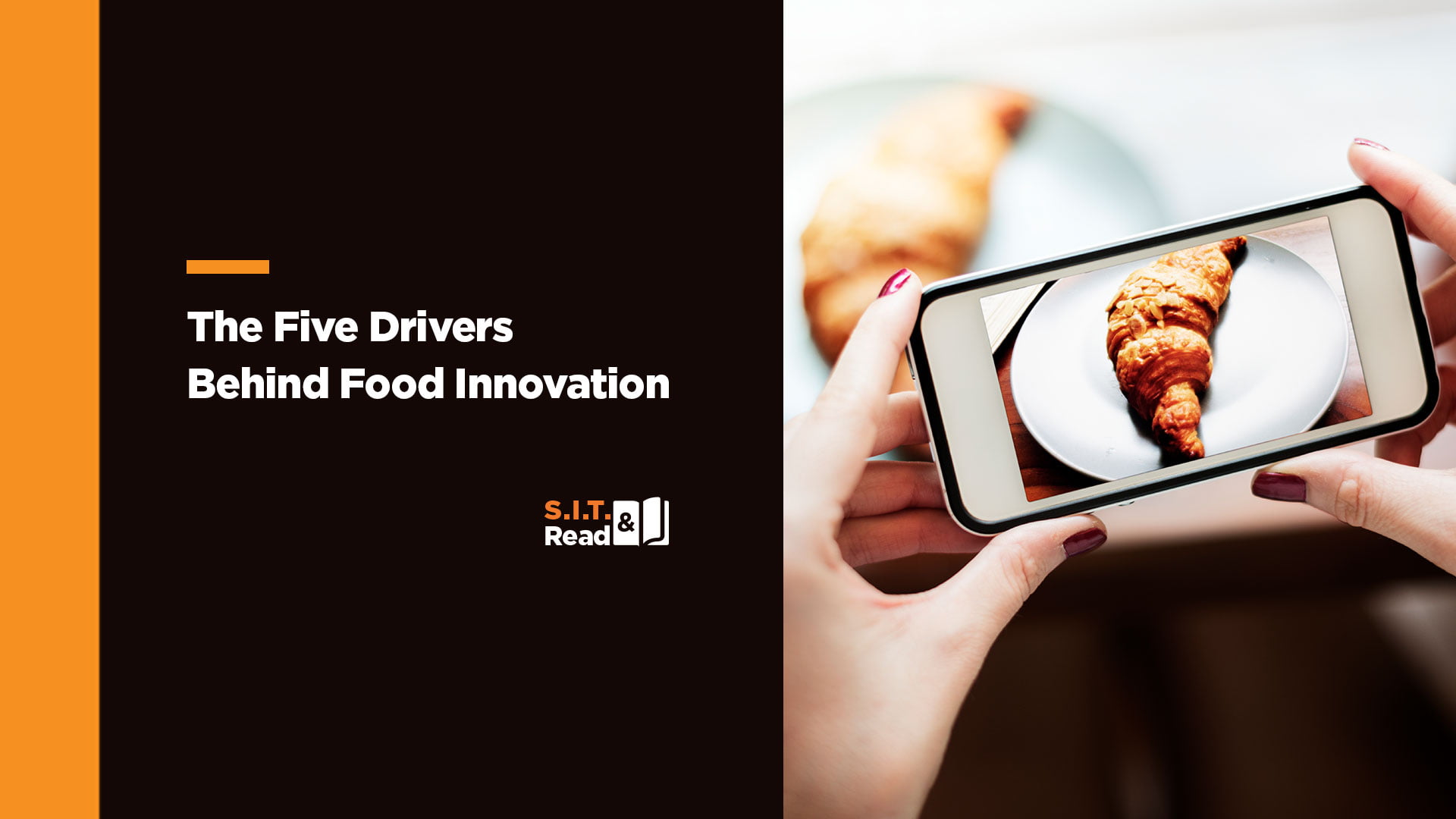One of my best friends, Rosa Seidenwar, is a pastry chef, food photographer, and stop motion artist. This gives me many perks, especially when a new recipe is in the works and I get called upon for my taste testing skills. Yes, it’s a tough job, but someone’s got to do it. As I nibbled, taking in all the flavors and textures, I couldn’t help but marvel. Even with the colossal amount of food items, recipes, cookbooks, food blogs, food shows, restaurants, delivery methods (did I leave anything out?) – people are still able to come up with something new! And what’s more, consumers aren’t ready to say – Thank you! We have enough! In fact, according to a study by NielsenIQ, a third of Americans are actively looking for new products to try. Which makes product innovation still a lead runner for food corporations, as opposed to, say, taking a year off and just focusing on productivity (same study states that 30,000 new products are launched each year in the consumer packaged goods industry). Having worked with food corporations in the past and seeing their modes for launching innovations, I was curious to also hear Rosa’s take, as representing the personal brands rising in the industry.
So if food innovation is your bread-and-butter, here are five drivers that keep product innovation going at such an intensity:
- Technology: New technology is affecting practically every aspect of the food industry – whether it’s the ingredients themselves (think cell-based meats), the equipment used on manufacturing lines, and kitchenware readily available and affordable to the regular consumer. This can deliver a whole slew of products that consumers can try out, whether because they can be manufactured, or because they can now be tried out at home.
- Digital: Apps and social media have changed the way we interact with food altogether. Whether its tracking calories, scanning QR codes on labels for the history of a food product, and the constant picture-perfect meals uploaded to insta, keeping up with the Jones’ has reached new heights and consumers are demanding products that meet these needs.
- Trends and lifestyle: I hate to use the C word, but Covid has changed a lot about how we connect with food. Whether it’s dining-in, family oriented meals, meals that are experiences, the food industry picks up on these trends (and other non-C related ones) and will create new products or adapt existing ones to suit. Working from home requires less products suited for eating on the go and gives rise to products like subscription boxes for creating meals at home. We see global trends such as sustainability affecting how ingredients are used and used up. And of course, while healthy eating never goes out of style, the introduction of new diets (Keto, Whole 30) also spark interest in new food items to match.
- New ingredients: The introduction of new or lesser used ingredients like monk fruit, microalgae, etc. (remember when spirulina was new?) or finding new uses for favorite ingredients like chocolate, peanut butter, and yogurt to fuel the inspiration for new products on the market. The motion for reducing waste and upcycling food leads to creativity in using previously overlooked by-products in new products.
- Your “Secret Sauce”: This last point is what gives each brand their exclusive drive. Ultimately, the food industry is made up of people, whether it’s one person in their home business, or teams of people in a large company). Each person involved in the food industry has their own unique offering and passion that they bring with them. It could be their experience from working in the industry or on a certain product line, the training they received at culinary school or degree in food science, or their market knowledge. It could be on a personal level such as affinities for fair trade, use of specific ingredients, risk taking, simple vs. complex flavors, specific cuisines. The combination makes up their secret sauce for what drives their creativity. You can look at this on a broader level, as what is each company’s secret sauce? What are the resources and strengths and cumulative experiences that can inspire?
So which is the biggest driver for you? The upside is, these drivers are very much connected. Ingredients can lead to products that establish behaviors. Behaviors can influence which ingredients are used. Technology can feed into trends that lead to products, and so forth. So once you get yourself onto one, you can always follow the arrows to the other. But your “Secret Sauce”? No one can follow that but you.
